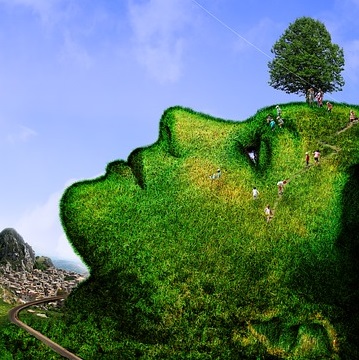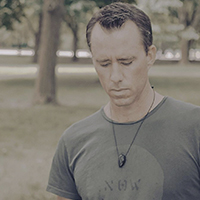After nearly two centuries marked by deep environmental and ecological scarring caused by the manipulative “heat, beat and treat” practices of the industrial revolution and unfettered deployment of unsustainable and largely unethical global business practices, our planet is finally on the mend.
Although we have a long way to go to achieve a fully clean-energy, zero-waste society, we have made great strides to find our way back to living in harmony with a truly bio-diverse natural world.
Having learned to live with a deep respect for the conative impulse of all life, and to satisfy our own volition without imposition on our sentient brothers, signs of hope abound that humanity is finally beginning to fit in on planet Earth again. Once the planetary bully, now the hands-off steward, we’re doing it without sacrificing as much as our predecessors, a mere 25 years ago, assumed we would.
How did it happen?
The beginning of the 21st century harkened the dawn of a hopeful new era of Earth Stewardship. Visionaries from a broad scope of disciplines—including philosophy, biology, engineering and ecology—had begun to lay the framework for what promised to lead humanity on a new path of hope, a trajectory 180 distinct degrees away from the colossal failures of the industrial revolution. At the helm of this trend stood an inter-disciplinary metaparadigm called biomimicry.
As the framework of biomimicry evolved over the first two decades of this century, it became painfully evident that its vision of a fully sustainable future would go unrealized without an applied ethos serving as the discipline’s foundation.
Inherent to this line of thinking is the fact that first-world population had been indoctrinated solely into the reductionist view of a mechanistic universe wherein people ran the clock and its works. Out of a pressing need to re-introduce this disconnected populace to the mysteries of nature (to echo Buckminster Fuller’s dream, da Vinci’s pantology, and Emerson’s vision), a new discipline called “silent ecology” emerged.
The practice of silent ecology involves a deeply immersive hands-on study of life’s principles and the universal laws of wholeness, flow, balance, limits, cause and effect, planes and evolution, coupled with a daily practice of silent, meditative communion in nature.
At its core, silent ecology involves bringing a curious mind, an open heart, a clear eye and an unprejudiced ear to nature in the same way the scientist brings her microscope to the lab.
In order for biomimicry to successfully integrate a sustainability ethos into the hearts and minds of the collective through the practice of silent ecology, it was determined that business leaders and children would be the two populations best fit to begin the journey. After all, children are the future and already know the truth, so our task would be to simply ensure they don’t forget. Business leaders were deemed critical to be reached above other members of society, if for no other reason than it is they who hold an inordinate influence by their vote on what products, services and systems actually make it to market.
The results of silent ecology practice led to a burgeoning demand for the sustainable culture we enjoy today: one driven by insights and understandings gleaned through our human-nature connection.
Now that we know what nature does, how she does it, why she does it, and have learned to be part of it, we have freed ourselves from the chains of our past and are living in harmony with the natural world through full integration.
In the business setting, this has meant a total overhaul of how things are done.
Businesses are now run with greater respect for the earth, systems designed with the non-negotiable tenant of zero-waste and the intention to give back more than is taken, and we enjoy greater symbiosis across the board, marked by a steady increase in prosperity, fair and equitable pay, with sharp decreases in global poverty and environmental decay.
Author: Jeff Beaudoin
Editor: Catherine Monkman
Photo: Pixabay











Read 0 comments and reply